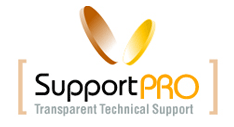Moving from VMware to AWS doesn’t need to be complicated. Think of it like moving to a new house. If you plan ahead and take the appropriate steps, you can transition smoothly without losing sleep. This blog provides a straightforward roadmap.
Step 1: Take Inventory – Know Exactly What You’re Moving
Make a list of everything you’re moving. Be aware of what you have before transferring anything:
1. List all VMs: Use free tools like RVTools to list every virtual machine. Note their CPU, memory, storage, and operating systems. This will let you know about the hidden resources you forgot about.
2. Map dependencies: Identify which applications talk to each other. That database server might be connected to three different apps you didn’t realize.
3. Categorize workloads: Label each of them under :
-Easy (test/dev environments)
–Medium (internal tools like HR systems)
-Critical (customer-facing production apps)
Step 2: Choose Your Migration Method
Not everything needs the same moving method:
- Rehost (“Lift & Shift”)
- Fastest method using AWS Migration Service
- Best for Simple apps, quick migrations, or when you’re pressed for time
- Replatform (Small Improvements)
- Swap VMware databases for Amazon RDS
- Replace local load balancers with AWS ALB
- Best for: Apps needing minor optimizations
- Refactor (Modernize)
- Break big apps into different containers (ECS/EKS)
- Use serverless (Lambda) wherever possible
- Best for you to plan to keep long-term Apps
Step 3: Prep Your AWS Environment – Set Up Your New Environment
Before moving in, you’d ensure the new house has electricity and running water:
1. Create an AWS Landing Zone
-Sets up secure accounts and permissions automatically
2. Set up networking
-Build VPCs that match your current VMware setup
-Set up Direct Connect/VPN if keeping some systems on-premise
3. Test backup solutions
-Verify Amazon S3/EFS works with your data
-Practice restoring backups before you need to.
Step 4: Migrate in Waves – Move Room by Room
You wouldn’t move all your furniture at once – the same logic applies. Move workloads in batches, starting with the easiest :
- First Wave
Move test/dev environments – low risk if something goes wrong - Second Wave
Migrate internal tools like HR and finance systems - Final Wave
Transition customer-facing production systems
Important takeaways:
- Schedule cutovers during low-traffic periods
- Test thoroughly after each migration (eg, can users log in? Is data intact?)
- Have a rollback plan for critical systems
Step 5: Optimize & Clean Up – Arrange Your New Space
After the movers leave, you’d organize your new home:
- Always turn off old VMs, but remember to keep backups for a few months, just in case.
- Use right-sized resources. Many VMs are overprovisioned – switch to smaller EC2 instances.
- Set up cost monitoring using AWS Cost Explorer to avoid a huge bill.
- Train your team, and update them on current changes. AWS works differently from VMware.
Conclusion
Like moving to a new house, a successful migration has three main steps: first, make a complete list of everything you’re moving and know everything about each VM’s specs and dependencies; second, carefully choose the best migration method for each workload, whether it’s simple rehosting, optimization through replatforming, or complete modernization through refactoring; and third, carry out your move in controlled waves, starting with non-critical test environments where you can safely learn and make changes before moving on to your most important systems.
Partner with SupportPRO for 24/7 proactive cloud support that keeps your business secure, scalable, and ahead of the curve.






